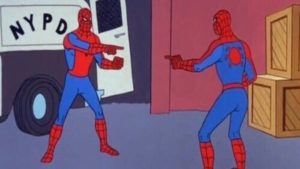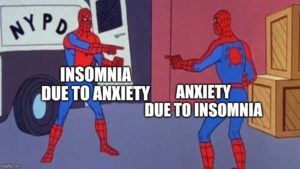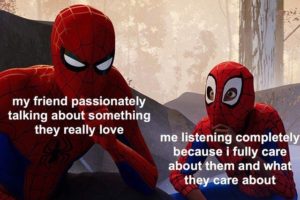The image I chose to write about is a picture that was actually taken by Diana Davies that shows Donna Gottschalk holding up a sign that reads “I am your worst fear, I am your best fantasy.” I chose this image because I feel I can make a few connections to Berger’s analyzation of oil paintings in episode 2 of Ways of seeing. The way vanity was shown in oil paintings v.s the way that the image has a woman looking at another woman. The objectification of Women as seen in the oil paintings v.s the non-existent objectification in the image by Diana. You don’t see “nude”, you see “I am your worst fear, I am your best fantasy”. You don’t see men choosing women, you see women choosing themselves. You see something much more different than the oil paintings. I’d like to also take the time to find out how the oil paintings are similar to the image and not just different. For a moment it occured to me how if people don’t know that the picture was taken at a Gay Liberation Parade, one would think that the quote is for a women’s rights march. This made me think of Episode 1 of Ways of seeing, and how the context in which you see the image can change your perception of it. I’m not sure which lens i’ll use yet, but i’m weighing my options.
Author Archives: Gary R Pereda Uraga
Wealth Is Health?
Contemporary depictions of wealth are, today, very different from what they used to be. More specifically, when talking about the oil paintings in Berger’s Ways of seeing Episode #3, you notice a huge difference. For starters, in today’s society, wealth has become something you show through the extravagant things you can buy and own with money.Things such as jewelry, big mansions, or cool expensive sports cars are big signs of one’s wealth.



Much different from the oil paintings with fruit on them. However, that’s not to say food doesn’t have any value or cant be seen as a luxurious item. It just depends on who you’re asking. To a starving kid in Africa, an oil painting in general could be seen as “wealth”. But to some kid in New York it doesn’t mean a thing if it’s not the latest pair of 1’s or that really shiny necklace. Perspective plays a big role, but there are common ways to depict wealth using food which many people can agree with. It just doesn’t involve oil paintings. It’s the act of eating expensive food. Things like lobster, salt bae steak, or food covered with edible gold flakes on top. These are the ways wealth is depicted in today’s time with food. All in all, we’ve traded oil paintings of fruit for designer items.






The World’s Crime
Berger’s central point in episode #2 Of Ways Of Seeing proves to be true even in today’s society. The idea that women have been taught from an early age to survey themselves continually is ever present in today’s media. Many times in television shows, there will be a scene where a woman is being slowly and closely filmed in order to show off her physical looks. The purpose is to glorify her looks in order to catch the viewers attention, usually meant for the male viewer which in turn feeds into the objectification of women. In other cases, women are shamed/harassed for being of different sexual preference or identity and are often put down for not being “straight”. One example which aligns with berger’s ideas in episode #2 is the advertising business and how it objectifies women in hopes of higher sales. The point of ads is to sell a product, but what happens when you add a women into the mix? Often times you’ll get half naked images of women, and other times its sexually suggestive images of women. All the time, it’s something that in some way degrades and objectifies women and builds the idea in their head that they must also be that way.
The video above is an example of how women are objectified in contemporary advertisements. The clip that follows works to relate the idea of how girls are taught to be that way from a young age.
This video is a compilation of t.v scenes in which women are sexually objectified for the male viewer.
Meme-tastic!!!
Episode #1 of John Berger’s Ways Of Seeing speaks on the idea that since the invention of the camera, images have become a sort of language that can take on a completely distinct meaning from its original intended purpose. This is done through the manipulation of context in which the image is found. Take for example the memes we see everyday on social media. The format is simple, yet effective. This image for example…

Shows a point in time in an episode of a television series where two of the same character are pointing at each other as if to be confused about what they are seeing. “That man’s an impostor” one of them says, to which the other replies “THAT man is the impostor”. The intended purpose of the films creator during that time was to express that one of these two is an impostor. However, social media has manifested a new “comedic language” in which words are placed over these sorts of images and given a completely new meaning. The end product looking something like this…

…The words placed over the image join together with the image to tell the viewer that having insomnia due to anxiety is the same as having anxiety because of your insomnia. Another example would be the following…

…Just like in the previous example, this image was taken from a film. The characters seem to be in the middle of thinking up a plan, however the words placed over them give the image a new meaning. A sort of friendly and funny meaning. This relates to John Berger’s ideas because it hits on the idea that easily reproducible images can be easily stripped of their original meaning and given a whole new array of possible meanings, which also depends on the viewer’s perspective.
~~~The idea that perspective is all about the eye, and how the eye can only be in one place at one time is what makes a viewer’s perspective so distinct from one another and also what gives meaning to what the viewer is looking at. This means that what you are looking at is distinct to you and only you, and no other person sees that image in your head the way you do but you. This also means that no other person can attach the same meaning to those images as you. They are seeing it from their perspective, through their own life experiences. Things another human being could not replicate. Until the camera. Camera’s are able to capture moments at any given time, and can be duplicated endlessly. Things you would normally travel miles to see now travel to you. It’s ironic how the very act of endlessly reproducing images due to their uniqueness, actually takes away from the image and in a sense lessens the quality. You can see an image of The Eiffel Tower a million times in a textbook, and it wouldn’t mean a thing, but it’s different when you’re standing in front of it. You can feel the greatness of the structure. But you’d probably take a picture of it there anyways. Likewise, when you play music over images you can change the feeling that the image gives off, and thus its meaning. ~~~


